Post-tensioned timber frame using hardwood
In the past decades precast concrete frames were developed using tendons to connect columns and beams. These systems showed favourable seismic behaviour, being able to avoid residual deformations after an earthquake. A similar low-damage rocking system for timber was developed in New Zealand at the University of Canterbury. The rocking timber system has been named Pres-Lam and it covers both seismic resistant frames and walls.
Post-tensioned timber structures are also being studied at the Institute of Structural Engineering at the ETH in Zurich since 2010. An innovative post-tensioned beam-column timber joint has been developed using glued laminated timber (spruce) and local strengthening of the joint with hardwood made of ash (fraxinus). No further steel elements are required for the moment-resisting timber joint, only a single straight tendon is placed in the middle of the beam. The developed post-tensioned beam-column timber joint is characterised by a high degree of pre-fabrication and easy assemblage on site.
The timber frame build for the ETH House of Natural Resources has three bays in each direction with a span of approximately 6.5 m. The frame is post-tensioned in both directions, so that no additional elements are required to carry the gravity or the horizontal loads.
Pictures frame
-
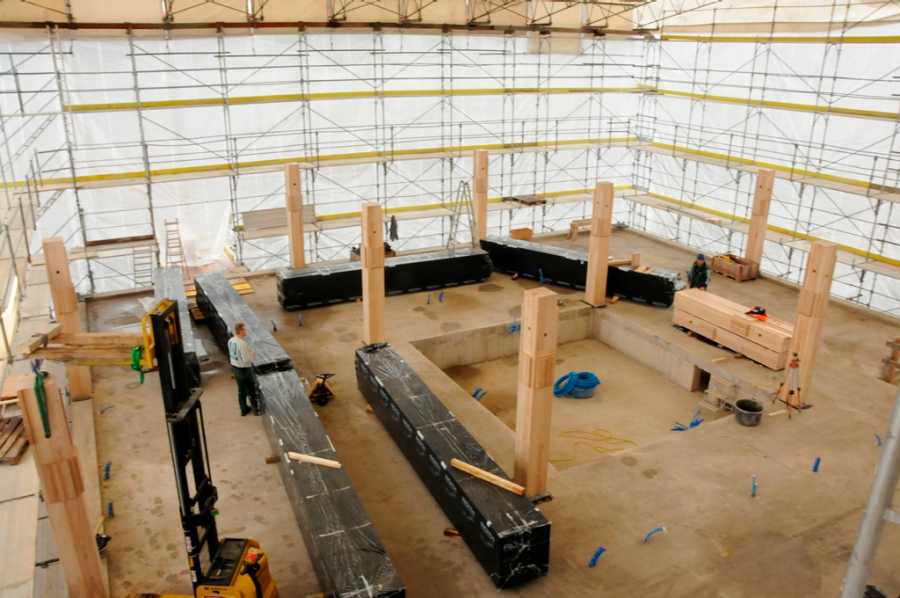
Columns on the first storey. (Photo: ETH Zurich) -

A beam is being put in place. (Photo: ETH Zurich) -
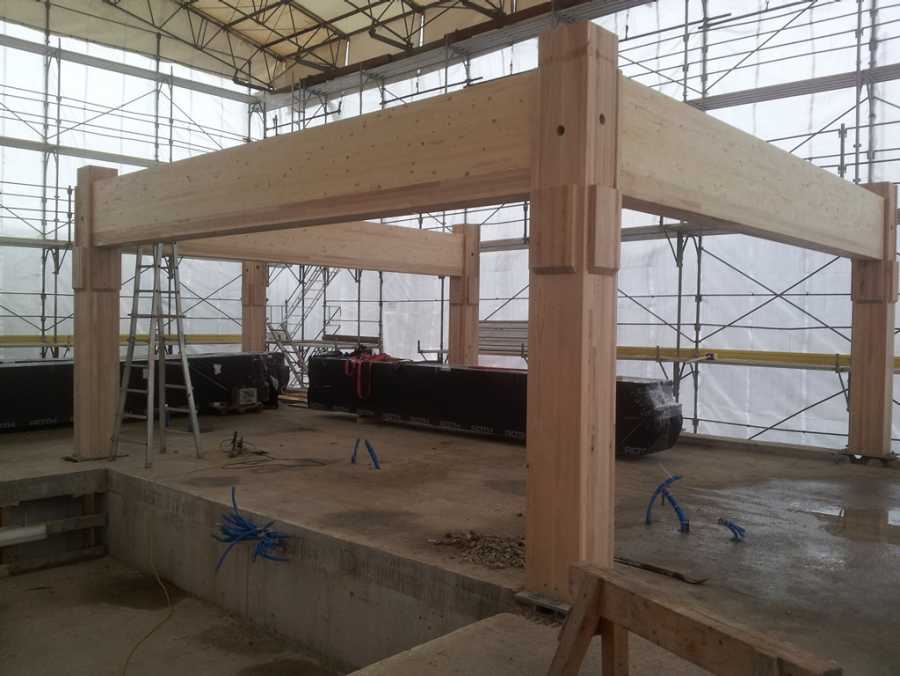
Part of the frame with cavities for the tendons. (Photo: ETH Zurich) -
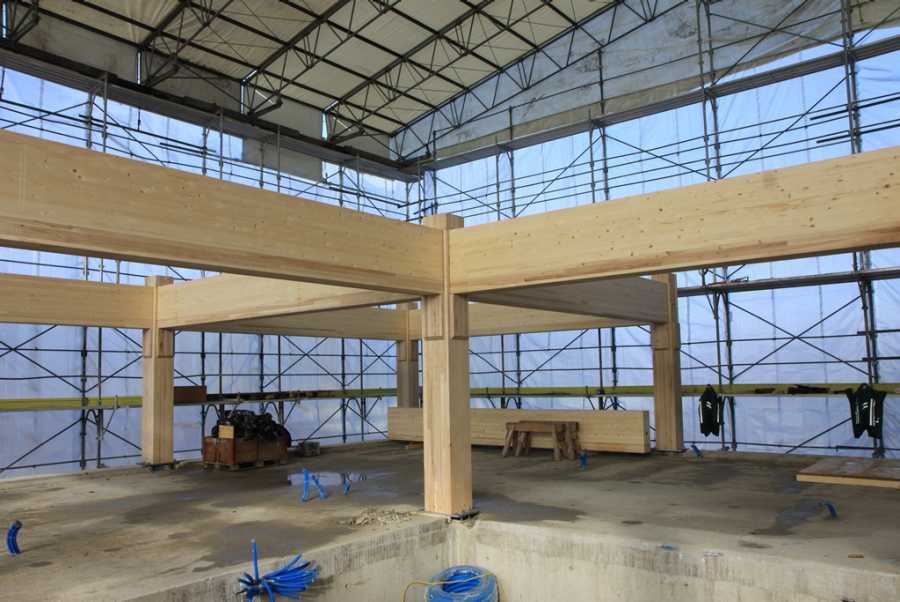
Nearly finished frame. (Photo: ETH Zurich) -
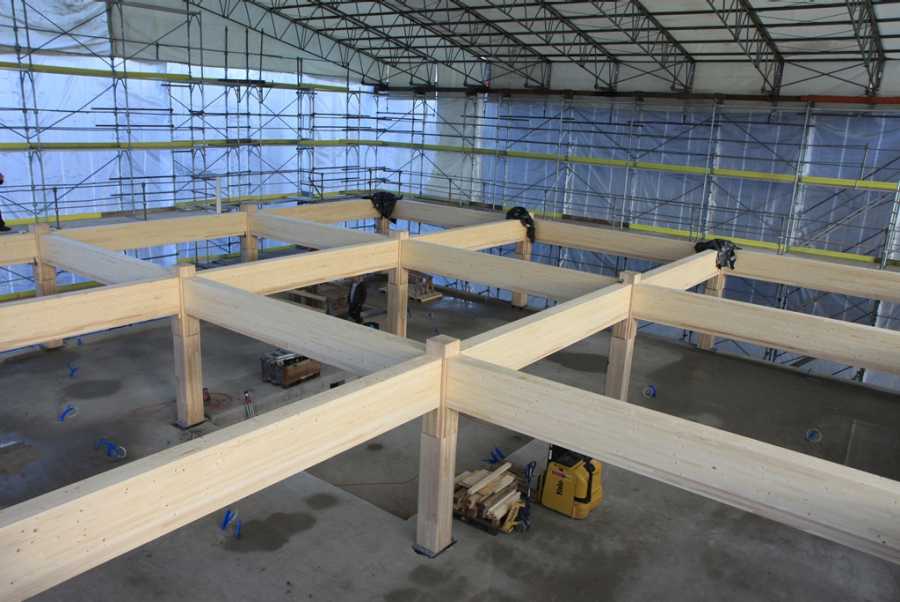
Finished frame on the first storey. (Photo: ETH Zurich) -
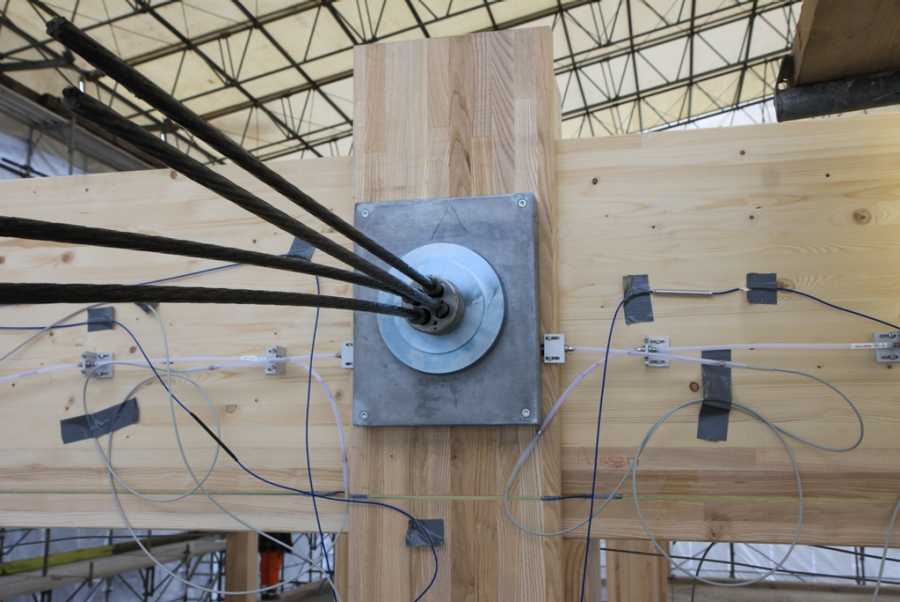
Anchorage for the tendon. (Photo: ETH Zurich)